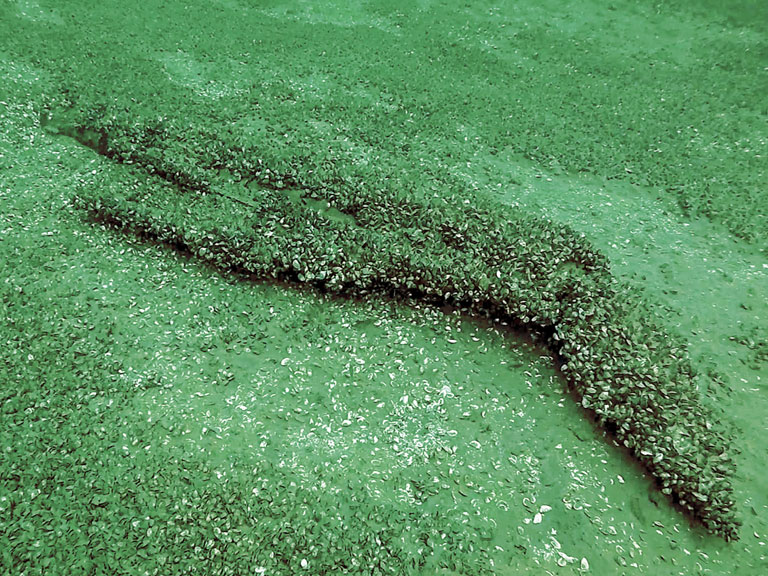County News
Buried treasure

Avro Arrow model identified after decades in Lake Ontario
Nearly two thirds of a century has passed since Jim Johnston was a technician in a top-secret compound at Point Petre, testing military-grade weapons and aircraft. He was an instrumental part of the team that tested the Avro Arrow models that were launched into Lake Ontario in the 1950s. He began working with the Avro company just out of college, in 1952.
“I was very instrumental in the testing,” says Johnston, who is now retired and living in Toronto. “Along with running the power control system, I ran the telemetering systems that they had loaded in the equipment, and we recorded whatever the trajectory actions and deviations were and gave it back to them.”
Now, 60 years later, the Arrow is a part of Canadian history—firmly in the past. Late last week, the remains of one of the models Johnston participated in launching was discovered by Osisko Mining. The shape of the model aircraft is plain to see under its blanket of zebra mussels, nose bent and still in the cold depths of the lake.
The next step is to send a team of divers, along with an archaeologist, to examine the model up close. Then, working with the archaeologist and the Canadian Conservation Institute, the model will be brought back to the surface to be restored. That likely won’t happen until next spring.
The zebra mussels that have encrusted the machine can cause some damage to the surface metal, because of the plaques they use to adhere to surface, but Burzynski suspects it would be superficial.
It’s the first time a model has been found. When the Avro Arrow program lost support from the federal government and was scrapped, a piece of technology that would potentially have been one of Canada’s most important contributions of the 20th century became a footnote. The project was dismantled, the plane taken apart to be sold for scrap.
Some of Canada’s best and brightest aerospace engineers left the country, moving to more secure organizations in the US. Some were employed by NASA.
“It was disappointing, because I had followed it all the way to the scale model firings and all the recording and analysis that was given, then they turned around and built the plane, and the plane performed superbly, and then they cancelled it,” says Johnston. “All the engineers were out of a job, because they collapsed the whole program, and they went to the States. They went into all the space work that was going on back then.”
Since the program’s end, an enduring nostalgia has led to several attempted searches for the model Arrows that are lying on the lake bed. Osisko’s CEO, John Burzynski, jumped on the bandwagon when he realized the new technology he had been using to search for mining materials would be ideal for hunting down the lost relics.
Burzynski’s project, which launched in July, split the potential landing site into grids. A machine has been searching that grid systematically, focusing on days when the weather was good and the waves calm. The sonar-based machine finds targets—objects that could potentially be the models—and then an underwater camera examines the targets visually to confirm.
At first, Burzynski’s team thought they were searching for nine models, but in doing research in partnership with RCAF Trenton, they learned there could be up to a half-dozen more than that. Now that they’ve found one, the search has been narrowed. Burzynski says there are about 200 targets the sonar has picked up in the past few days alone.
The targets are usually objects from military testing. The floor of Lake Ontario is littered with refuse from military weapons testing.
Johnston recalls working on a different program before the Arrow; a guided missile that would be launched from a pylon structure on a fighter jet’s wing. In its testing phase, the missiles were launched into the water from planes flying from Camp Picton. But although that design passed its initial testing phase, when the equipment was sent to Cold Lake in Alberta, it failed.
Johnston says such a behemoth project would never have worked in a country without the capacity to support its manufacture.
“It’s such an expensive ordeal to develop, design, build, launch and test, and what really was disappointing was that the cost to people buying into a Canadian design. We had no production option for our products, and therefore we couldn’t get a production going that would make it economical. The US was way ahead of us in quantity if they produced anything, and that’s the way it worked. Still is.”

Comments (0)